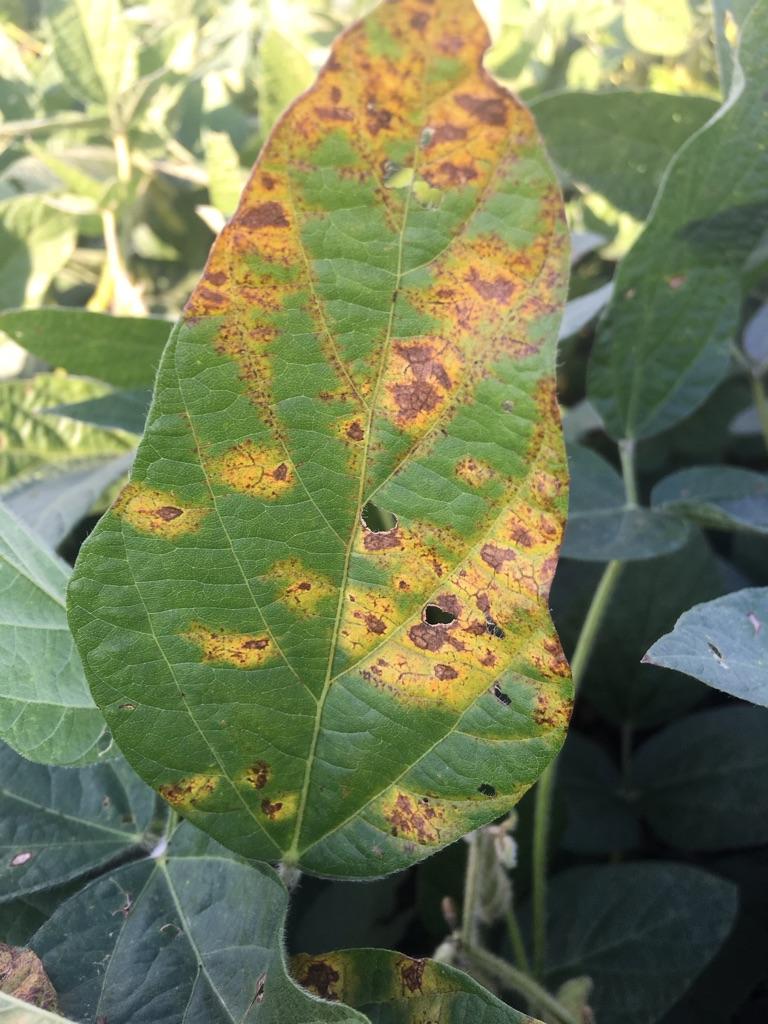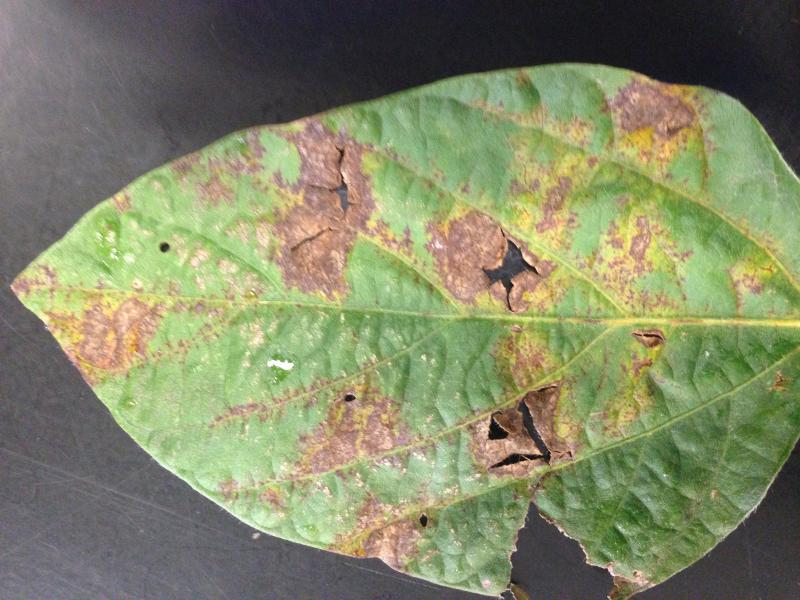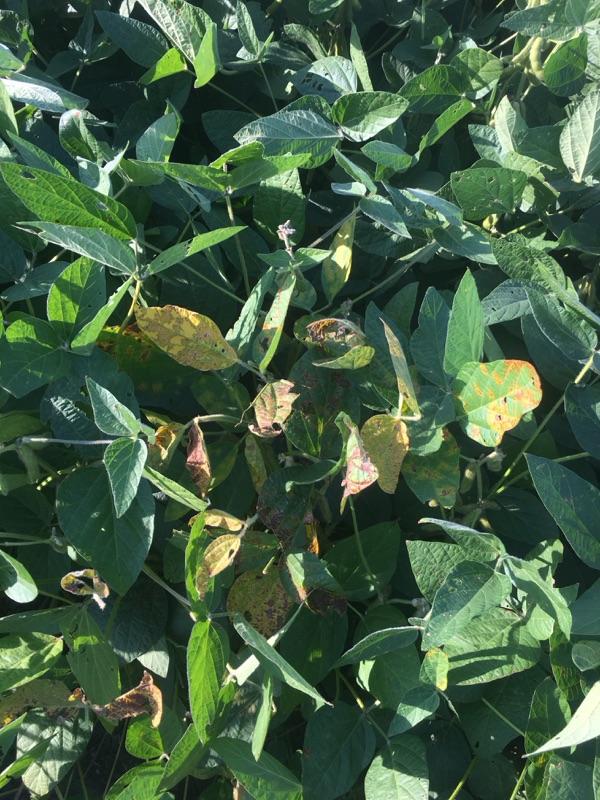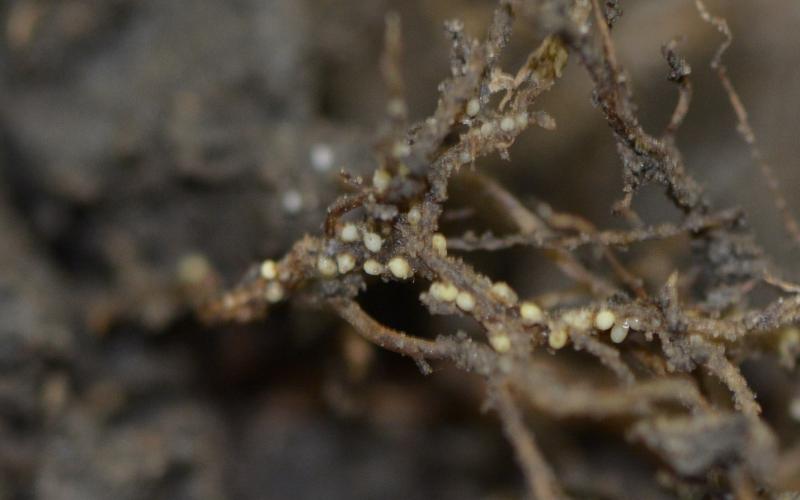Originally Published: Sept. 20, 2017
Originally written with contributions by Emmanuel Byamukama, former SDSU Extension Plant Pathologist and Marie Langham.
A new soybean virus called Soybean vein necrosis virus (SVNV) was detected in South Dakota soybean fields in Davison and Union counties. Symptomatic plants were sporadic and found along the field borders. Infected plants showed mild to moderate severity. It is possible this virus is occurring in other counties but at very low incidence within the field making it difficult for the plants to be easily observed.

Symptoms
Soybean vein necrosis virus symptoms start as light yellow lesions between the veins.

These expand out over time but are limited to within the leaf veins. The yellow lesions eventually turn to reddish brown lesions.

Infected leaf tissues may die but do not fall out.

Infected plants may have only a few leaves showing symptoms or the entire plant may show symptoms.
Transmission
Soybean vein necrosis virus is transmitted by thrips. Several species are thought to transmit SVNV but so far soybean thrips (Neoydatothirps variabilis) have been confirmed as the vector of this virus. The immature stage of this insect, the nymph, is the only stage that can feed on infected plants and acquire the virus. Adults that did not acquire the virus at the nymph stage do not transmit the virus, nor do they pass on the virus to their eggs. It is thought that SVNV overwinters in broadleaf weeds where thrips acquire it and transmit it to soybeans. Recently, seed transmission of this virus was reported to be around 6%.
Yield Impact & Management
The soybean fields which had SVNV symptomatic plants this season only had very few plants infected. Therefore, the yield impact in these fields should be negligible. Studies on SVNV from Iowa indicated no significant impact on grain yield. However, the authors reported significant impact of this virus on grain quality, mainly reduction in oil content. SVNV can be best managed by controlling the vector, the thrips. However, insecticide application is not recommended to manage thrips for the purposes of managing SVNV unless thrips threshold is reached.
Additional Resources:
- Bloomingdale, C. et al. Soybean vein necrosis virus. Crop Protection Network.
- Groves, C. et al. Seed transmission of soybean vein necrosis virus: The first Tospovirus implicated in seed transmission.
- Irizarry, M. Soybean vein necrosis virus: Impacts on infection on yield loss and seed quality and expansion of plant host range.


